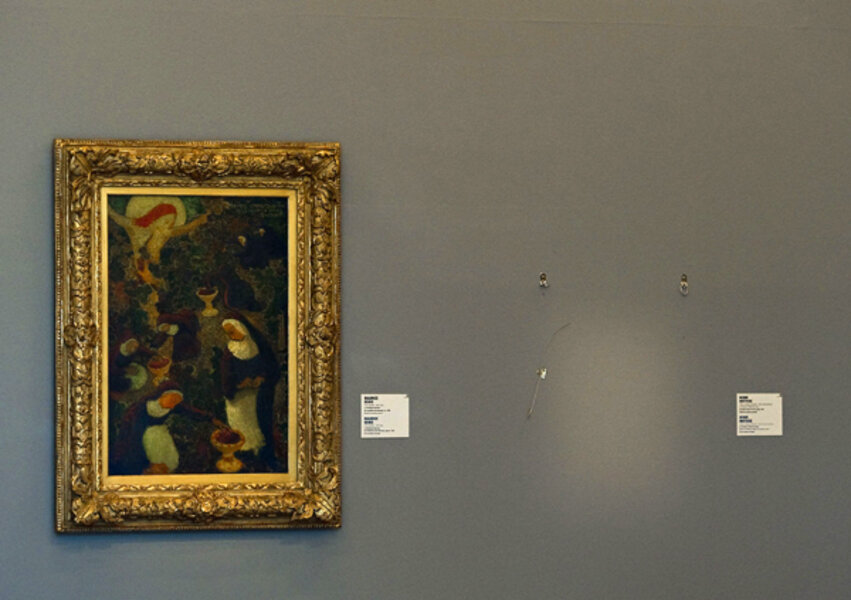Dutch art heist 'a nightmare for any museum director'
Loading...
| Utrecht, The Netherlands
Seven highly valuable paintings by artists like Matisse and Picasso were stolen last night from the Kunsthal Rotterdam in The Netherlands in what the museum director called "a nightmare."
The stolen works – by Pablo Picasso, Henri Matisse, Paul Gauguin, Meyer de Haan, Lucian Freud, and two by Claude Monet – were part of an exhibition called Avant-Gardes, a selection of 150 works from the Triton Foundation Collection. The collection is a private one, assembled by wealthy Dutch entrepreneur Willem Cordia and his wife, Marijke.
In a press conference this afternoon, Director Emily Ansenk of Kunsthal Rotterdam said she was “shocked” by the theft, which would have been “a nightmare for any museum director.” The museum refused to name the value of the collected works, but estimates have been made from 10 million to several tens of millions of dollars.
Ms. Ansenk called the museum's security “state-of-the-art,” although Willem van Hassel, chairman at the Kunsthal, admitted that there were no guards present. The museum and its insurer had knowingly chosen “technological security,” local media reported Mr. Van Hassel as saying. This includes security camera images that the police are now investigating.
The size of the theft – seven paintings – is remarkable, says Ton Cremers, a consultant on museum security (though not for Kunsthal Rotterdam) who spent all day at the crime scene. Mr. Cremers, who founded Museum Security Network, a website on “cultural property protection,” points out that the paintings were easily seen from outside through the windows – maybe too easily. “You want works of such value in the heart of your building, in a separate space,” Cremers said.
What will this do to Kunsthal Rotterdam's reputation? “Oh, this is not good”, said Cremers. “This case will have a lot of international attention.” He expects the next time Kunsthal Rotterdam is organizing an exhibition, art owners will be “very critical” toward the museum before entrusting them with their expensive works.
Kunsthal Rotterdam has no collection of its own. Its exhibition topics vary greatly, from models of moving dinosaurs, the history of Rotterdam's soccer club Feyenoord, to retrospectives on Leonardo da Vinci and M.C. Escher.
The report of a break-in came shortly after 3 a.m. on Tuesday morning, the police announced in a press release, calling the heist “well-prepared.” Museum director Ansenk pointed out that “all works have been internationally registered and described,” which she says will make it hard for the thief or thieves to sell them – unless the buyer doesn't mind that he forever has to hide the works.
The chance of stolen art being returned to its owner generally is small, says security expert Cremers. “For paintings, that chance is around 30 to 40 percent. On average it takes about seven years,” he says. But he notes that there is no guarantee of recovery, pointing to two works by Vincent van Gogh that were stolen from the Van Gogh Museum in Amsterdam in December 2002. Two thieves were sentenced for that crime in 2005, but the stolen paintings have never been recovered.
The Kunsthal Rotterdam was closed for public today, but it will be open again tomorrow.





